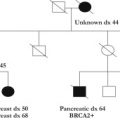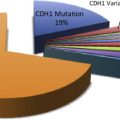
In this issue of Surgical Oncology Clinics of North America , we provide the practicing surgical oncologist with an impressive array of articles, each designed to deliver state-of-the-art cancer genetics information that is clinically relevant and readily usable in everyday practice. We cover all of the principle solid tumor malignancy syndromes on which surgical oncologists are most frequently consulted. Every article is written by world-class experts, each of whom is an active clinician practicing at internationally renowned academic medical centers. Our goal is to provide you with the definitive information, evidence-based guidelines, and exhaustive references you need to navigate twenty-first century cancer genetics and provide the best possible care to your patients. Our issue is filled with easy-to-read and easy-to-use tables of clinical practice guidelines, online resources, and exhaustive references.
We begin the issue with John Burn’s testament to the vital importance of that simple question: “Have you or anyone else in your family ever had cancer?” We regularly remind our medical students, residents, and fellows that you do not need to know an intron from an exon to save a life. We remind them that recording family health history is the standard of care for a comprehensive history and physical examination (H&P). We remind them because we know the vast majority of recorded H&Ps have absent or deficient cancer family history information. Recent literature confirms that even among oncology practices, 70% of H&Ps are incomplete with regard to cancer family history, including critical age at diagnosis information. The article by Vickie L. Venne and Maren T. Scheuner reviews the barriers and provides the tools necessary to secure accurate cancer family history information in the age of the electronic medical record. Zohra Ali-Kahn Catts with Heather Hampel and Amanda Gammon with Deborah W. Neklason review the dramatic extent to which genetic counselors can assist surgical oncologists and their patients. Importantly for all concerned, the underappreciated, surprisingly supportive legal framework protecting genetic information confidentiality is also reviewed.
In the next article, we begin our in-depth review of solid tumor genetics with a detailed summary of the clinical features, management, and genetic principles of each of the eleven currently known hereditary CRC syndromes. We bet you can’t name them all—but you’ll know how to manage each and every one of them after studying Kory Jasperson and Randall W. Burt’s impressive work. Recertifying exams and daily clinical practice are full of tough questions regarding hereditary and familial breast cancer. In the next article, Jeffrey N. Weitzel takes us through what we need to know about hereditary breast and ovarian cancer syndrome as well as the seven other genetic syndromes associated with increased risk of invasive breast cancer. The advantages and limitations of newly available gene panels are also discussed.
In the articles by Ashton A. Connor with Steven Gallinger and Hugh Colvin with Ken Yamamoto, Noriko Wada, and Masaki Mori, we are taken through the most up-to-date information available on hereditary pancreatic and gastric cancer, respectively. Both of these articles outline clearly the multiple heritable syndromes that confer pancreatic and gastric cancer susceptibility. Each syndrome requires specific surveillance strategies and surgical care, including prophylactic surgery in some cases; all of which is reviewed.
In the article by Omar M. Rashid and Jonathan S. Zager, we are provided a thorough review of the impact of advances in germline as well as somatic genetics on the standard of care of malignant melanoma. This includes both new and soon to be released genomic-based targeted molecular therapies. In the article by Jeffrey A. Norton, Geoffrey Krampitz, and Robert T. Jensen, a thorough compendium of clinically relevant genetics and the clinical management of multiple endocrine neoplasia (MEN) are presented. It is an impressive body of work.
We close with an article by Marc S. Greenblatt, which is a sobering but extremely useful review of “what to do when genetic test results are not definitive”: the significance and management of DNA sequence variants of unknown clinical significance, so-called VUS, are major issues in clinical cancer genetics and issues that we need to know how to navigate with our patients.
In what is perhaps the most poignant comment of this issue, Professor Jeffrey A. Norton observes in the early pages of his article: “Before MEN-1 can be diagnosed it must be suspected .” Louis Pasteur reminded us in 1854 that “chance favors the prepared mind.” At the end of the clinical day, it is indeed our responsibility to ask the cancer family history question described above. It is up to us to be prepared, to ask the key questions, to suspect those syndromes that pose the gravest risk to those who entrust their care to us, and then, based on the best objective information we have, act in the very best interest of our patients and their families. We trust this issue will assist you in those efforts. It is our sincere hope that it will help to “prepare the mind” to deliver optimal cancer prevention and care.
Stay updated, free articles. Join our Telegram channel

Full access? Get Clinical Tree





